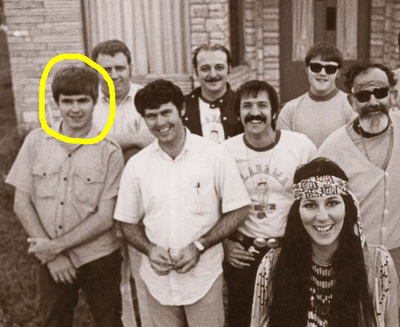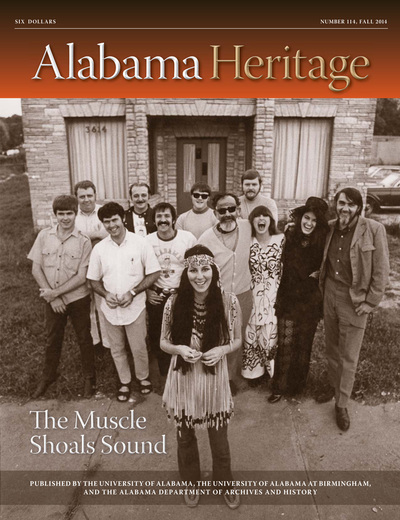Yes, that’s Cher on the magazine’s cover. The article also mentions several other celebrities and their connection to the Muscle Shoals Sound Studio is fascinating. I’ve discovered, however, that other people on the cover have fascinating stories, as well. Eddie Hinton, the person in the front row (far left) of the cover photo, is one such individual. His story was one of tragedy and triumph, and it just begged to be blogged.

Hinton enrolled at the University of Alabama after high school. He was required to participate in R.O.T.C., and he found his place in the Drum and Bugle Corps along with his friend John D. Wyker. Although he finished three years at the University of Alabama, Hinton decided not to wait until graduation to pursue his musical career. He withdrew and played with multiple bands in the Tuscaloosa area over the next few years.
Afterwards, Hinton’s talent led him to enter the recording business in Muscle Shoals. He found work playing and producing with a number of recording studios, notably Quinvy Studio and FAME Studios. Hinton was an important member of the Muscle Shoals Sound Studio when it opened in 1969. He participated in recording sessions with Cher, the studio’s inaugural artist, as well as many other well-known musicians, including R. B. Greaves and Wilson Pickett.
Over the next several years, Hinton appeared on albums from artists like Elvis Presley and Aretha Franklin. He proved his skill as a songwriter and collaborator by working with numerous artists throughout the late 1960s and 1970s. He also recorded a solo album of his own in 1977 called Very Extremely Dangerous.
The following decade was difficult for Hinton. He recorded six songs in Muscle Shoals in 1982, but record labels were uninterested, leaving the project unfinished and Hinton in an emotional slump. He and his wife Sandra divorced. He also became alienated from his mother and turned to drugs and heavy drinking.
In the mid-1980s, John Wyker, Hinton’s college friend, discovered Hinton sitting on a bench, homeless and destitute. Wyker put Hinton back on his feet, helping him to combine new material with the six songs he’d recorded previously to create an album called Letters from Mississippi (1986). The album’s success allowed Hinton to make a comeback and release two additional albums in 1991 and 1993. Hinton toured in Italy and reunited with his mother, with whom he lived in Birmingham.
Unfortunately, Hinton didn’t live to see the release of his next album. He died of a heart attack on July 28, 1993. He was only fifty-one.
The public took a renewed interest in Hinton’s work after his untimely death. Producers distributed his previously unreleased music to the public. The Alabama Music Hall of Fame recognized his achievements with a bronze star and named him a music achiever. Although Eddie Hinton may not have reached the level of fame occupied by Cher, with whom he shares Alabama Heritage’s cover, he certainly made a significant contribution to music and the Muscle Shoals sound, and his story is definitely one worth sharing.
Rebecca Mast is a senior at the University of Alabama. She is an English major, minoring in creative writing and French. When she’s not searching through fascinating historical records, she enjoys reading, drawing, and playing clarinet with the Million Dollar Band.
References
http://rubbercityreview.com/2012/08/the-lost-soul-of-eddie-hinton/
http://www.encyclopediaofalabama.org/face/Article.jsp?id=h-2444
http://swampland.com/articles/view/title:remembering_eddie_hinton


 RSS Feed
RSS Feed